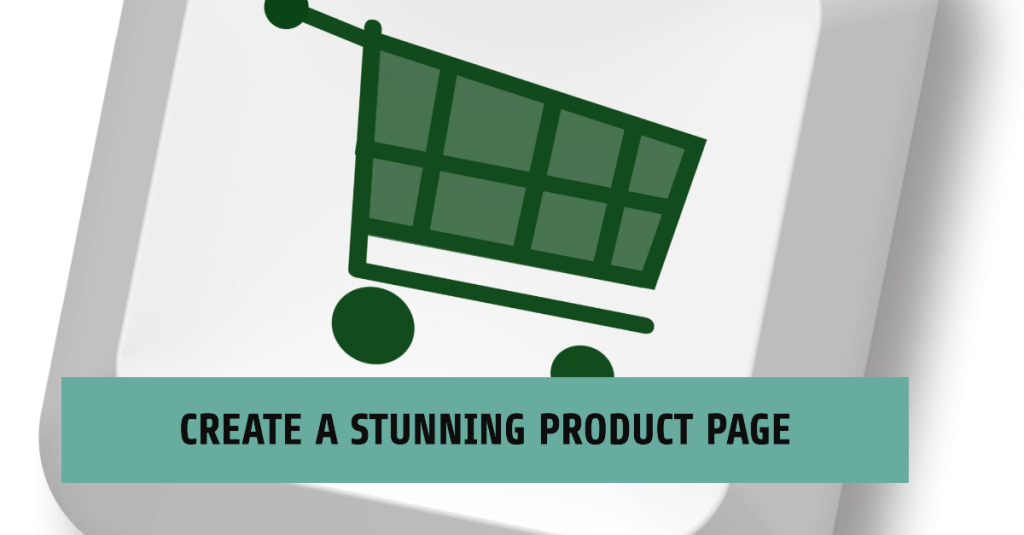The Ultimate Guide to Creating High-Converting Product Pages on Shopify

Product page optimization is the strategic process of crafting product pages that drive sales on your Shopify store. It’s about understanding your target audience, highlighting the value proposition of your products, and removing any friction that prevents customers from hitting that Add to Cart button.
In this guide, we’ll delve into the world of product page optimization, explore its importance, and equip you with the knowledge to create product pages that convert visitors into paying customers.
What is product page optimization?
Product page optimization is the ongoing process of refining your product pages to maximize their effectiveness. It involves analyzing user behavior, testing different layouts and content, and ultimately creating a product page that compels visitors to complete a purchase.
Why is product page optimization important?
Product pages are the cornerstones of your Shopify store. They’re where potential customers learn about your products, evaluate their value, and ultimately decide to buy. Here’s why product page optimization is crucial:
- Boosts conversions: Well-optimized product pages lead to a higher conversion rate, meaning more visitors become paying customers.
- Improves customer experience: A clear and informative product page provides a positive user experience, fostering trust and brand loyalty.
- Increases average order value: Optimized pages can encourage upselling and cross-selling, leading to customers spending more per transaction.
- Enhances SEO: Optimized product pages with relevant keywords and content can improve your store’s ranking in search results.
What is product page optimization in the app store?
While product page optimization refers to the strategic improvement of your product pages themselves, there are also apps available in the Shopify App Store that can assist you with this process. These apps offer features like A/B testing, heat mapping, and conversion rate tracking, making it easier to test different elements and identify areas for improvement.
11 Elements of a Great Product Page
Now, let’s dive into the key ingredients that make up a high-converting product page:
1. Compelling Product Images
- Go beyond basic product shots: High-quality photos are essential, but consider including lifestyle images that showcase the product in use. Think about the emotions you want to evoke and the customer’s ideal use case.
- Multiple angles and close-ups: Show the product from various angles, highlighting details like material texture, stitching, or unique features. Use high-resolution images that zoom in on important aspects.
- Professional lighting and editing: Ensure consistent, well-lit photos that accurately represent the product’s colors and details. Consider basic editing to remove blemishes or adjust brightness for a clean look.
2. Enticing Videos
- Showcase product functionality and benefits: Don’t just show the product sitting still. Create videos that demonstrate how the product works, its key features in action, and the problems it solves.
- Consider customer testimonials: Including short video testimonials from satisfied customers can build trust and social proof.
- Keep it concise and engaging: People have short attention spans online. Aim for short, engaging videos that capture the essence of your product within the first few seconds.
3. Clear and Concise Product Titles
- Target relevant keywords: Research relevant keywords that potential customers might use to find your product and incorporate them naturally into the title.
- Focus on clarity and conciseness: Keep it short and informative. Accurately describe the product while grabbing attention with strong verbs and highlighting key features.
- Consider using a benefit-driven title format: For example, instead of just “Cotton T-Shirt,” try “Super-soft Cotton T-Shirt for All-Day Comfort.”
4. Benefit-Driven Descriptions
- Focus on the “why” behind your product: Don’t just list features; explain how each feature benefits the customer. How will the product improve their life, solve a problem, or make them feel better?
- Use storytelling and emotional language: Craft a compelling narrative that connects with the customer’s emotions and desires.
- Address common customer questions: Anticipate what questions customers might have about the product and answer them directly in the description.
5. Mobile-Friendly Design
- Responsive design is key: Ensure your product pages adapt seamlessly to different screen sizes and devices, especially smartphones.
- Prioritize essential information: Above-the-fold content should be clear and easy to digest on mobile devices. Focus on high-quality product images and a prominent “Add to Cart” button.
- Optimize for touch interactions: Make sure buttons and links are large enough for easy tapping on a mobile screen.
6. Clear Calls to Action (CTAs)
- Use strong verbs and contrasting colors: “Add to Cart” in a vibrant color stands out better than generic text.
- Consider multiple CTAs: Strategically place CTAs throughout the page, not just near the top.
- Test different CTA variations: Use A/B testing to experiment with different CTA wording and placement to see what resonates best with your audience.
7. Customer Reviews and Ratings
- Encourage customer reviews: Make it easy for customers to leave reviews and ratings on your product pages. Offer incentives or discounts for leaving reviews.
- Respond to reviews (positive and negative): Actively engage with customer feedback. Thank them for positive reviews and address concerns raised in negative reviews politely and professionally.
- Showcase positive reviews prominently: Feature positive reviews with high ratings on your product pages to build trust with potential buyers.
8. Detailed Variant Options
- Clear and consistent presentation: Use clear dropdown menus, swatches, or buttons to display different product variants like size, color, or material.
- Accurate descriptions and images: Ensure each variant has an accurate description and a corresponding image that reflects its specific details.
- Stock availability: Clearly indicate if certain variants are out of stock to avoid customer frustration during checkout.
9. Shipping and Return Information
- Transparency is key: Be upfront about shipping costs, estimated delivery times, and return policies. Consider offering free shipping or easy return options to incentivize purchases.
- Multiple shipping options (if available): Offer different shipping options with varying speeds and costs to cater to different customer needs.
- Easy-to-find information: Make shipping and return information readily available on your product pages, often in a dedicated FAQ section.
10. Trust Signals
- Display security badges and payment logos: Show logos of trusted payment processors and security certifications to reassure customers about the safety of their financial information.
- Include customer support contact information: Clearly display your customer support contact information, such as email address or phone number, to show customers you’re readily available to address any concerns.
- Display social proof elements: Feature logos of companies you’ve partnered with, positive media mentions, or awards your brand has received. This can build trust and credibility in the eyes of potential buyers.
11. Scarcity and Urgency (Used Ethically)
- Limited-time offers: Create a sense of urgency with limited-time discounts or promotions. However, avoid using misleading tactics like fake countdowns or pressure sales techniques.
- Low stock notifications: Inform customers when a product is running low in stock. This can create a sense of scarcity and encourage them to purchase before it’s gone.
- Use ethically and transparently: Be upfront about the availability of your products and avoid creating false scarcity. Focus on genuine promotions and limited-edition items to encourage purchases without compromising trust.
By incorporating these elements and their detailed explanations, your product pages will become more informative, engaging, and conversion-driven. Remember, this is an ongoing process. Experiment with different approaches, track your results, and continuously refine your product pages to provide the best possible experience for your customers and maximize your Shopify store’s success.
For a deep dive into Product Personalization, Check our article: Design Your Dream: Powerful Shopify Apps for Product Personalization.


